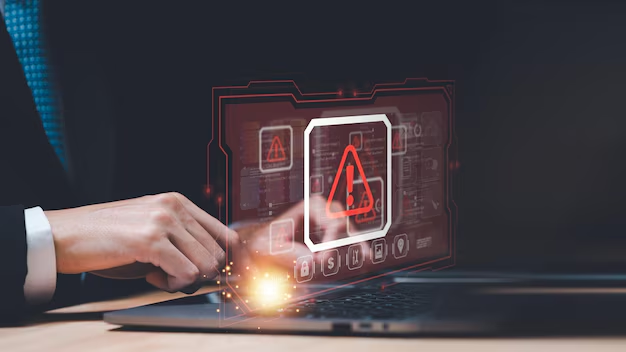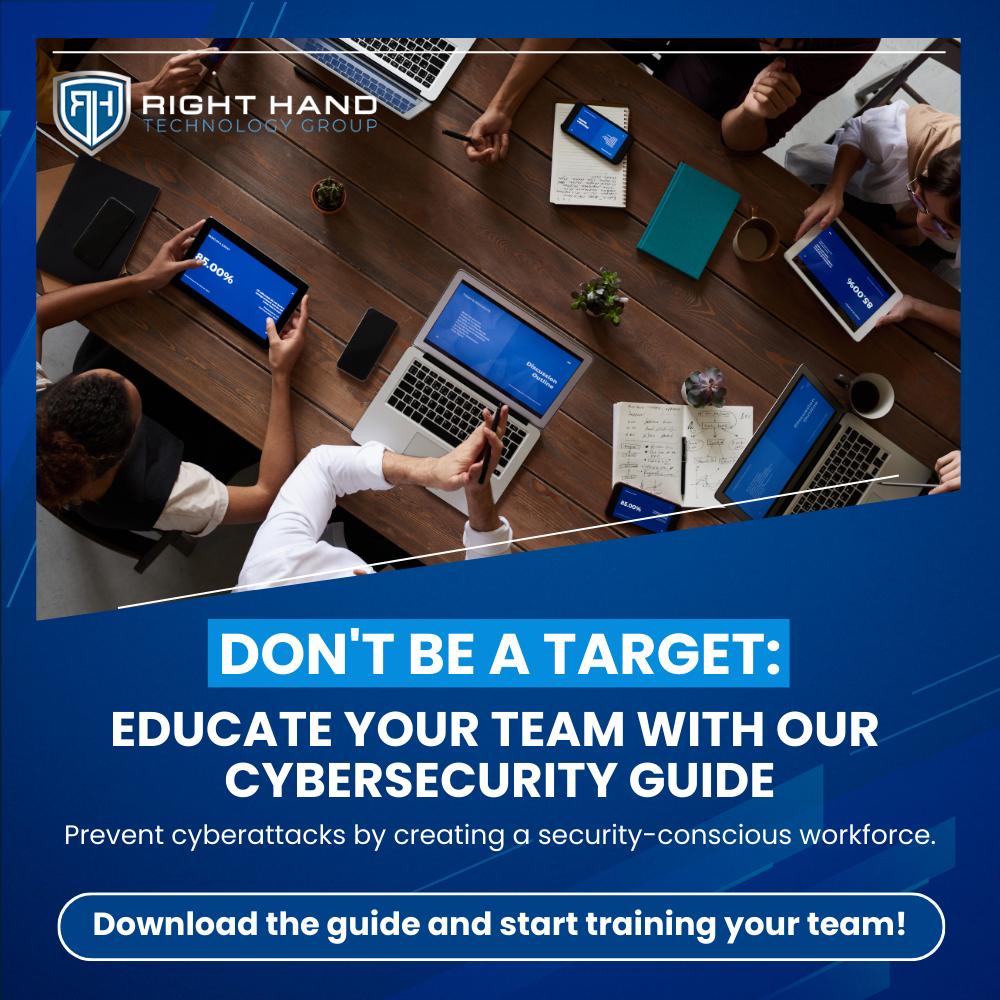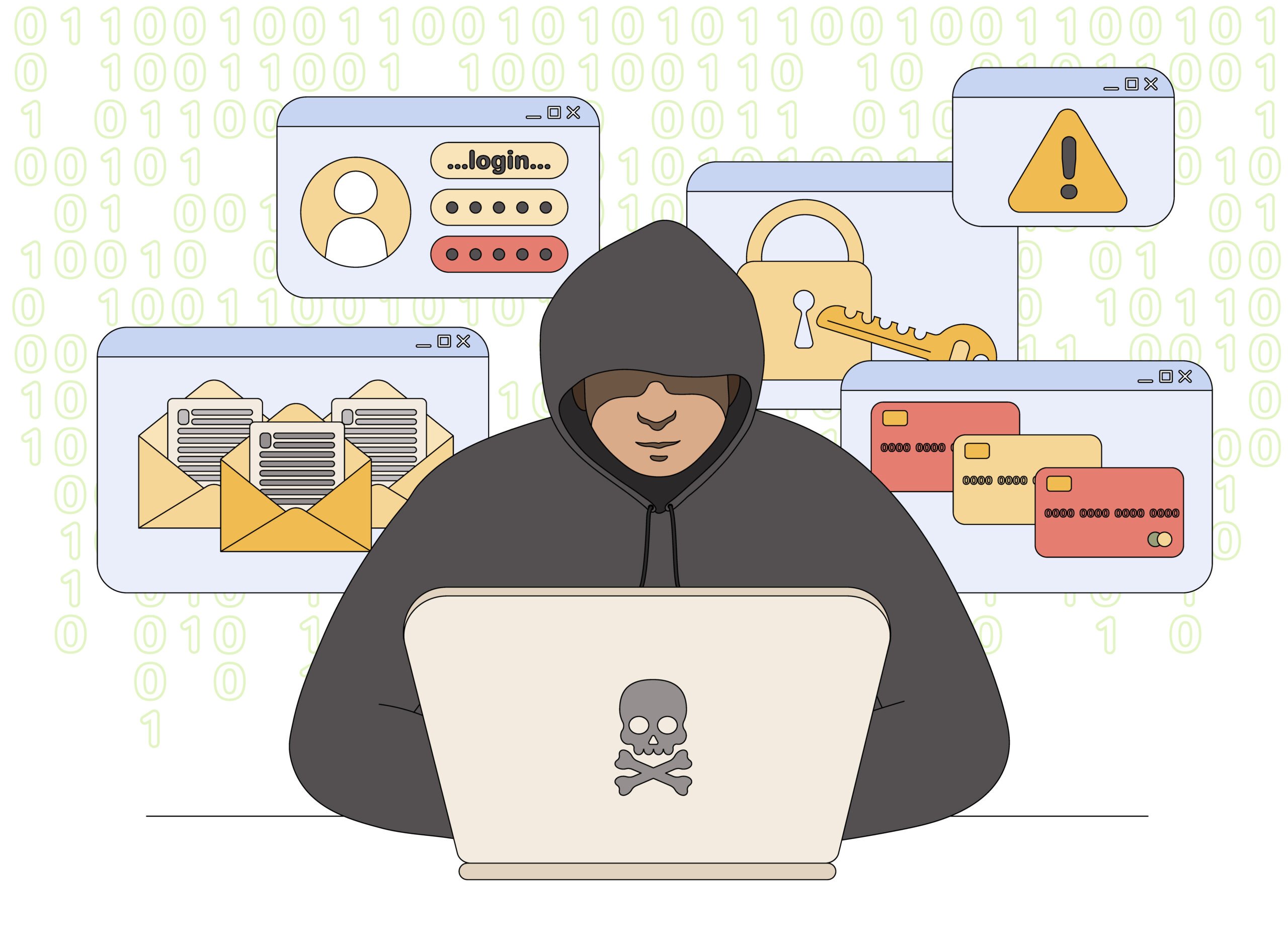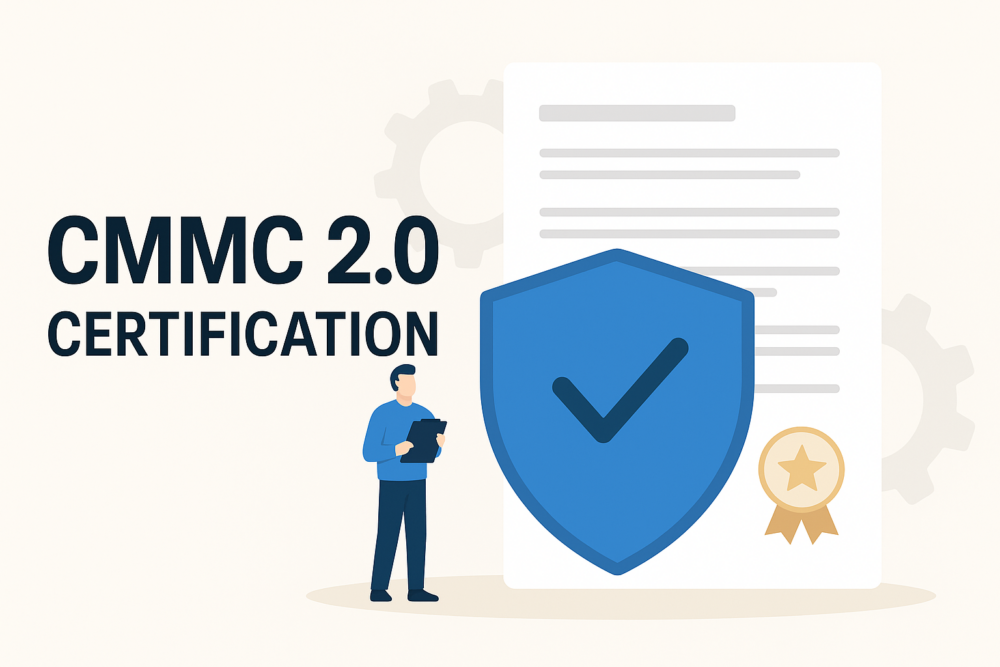CMMC 2.0 Certification: Your Complete Guide to Getting Compliant
The Department of Defense isn’t just raising the bar on cybersecurity—it’s making it mandatory. If you’re a contractor, subcontractor, manufacturer, or IT service provider handling federal contract information (FCI) or controlled unclassified information (CUI), CMMC 2.0 Certification is no longer optional. It’s a prerequisite for doing business in the defense supply chain.
Yet despite growing awareness, many organizations are still unsure where to start. The 2.0 version of the Cybersecurity Maturity Model Certification (CMMC) introduced some welcome simplifications—but it also brought stricter accountability, real audits, and a clearer line between compliance and wishful thinking.
This article is your step-by-step guide to understanding what CMMC 2.0 requires and how to actually achieve certification. Whether you’re just hearing about the framework or knee-deep in a gap assessment, we’ll walk you through the three certification levels, the key steps, and what you can do right now to start moving forward.
Getting certified under CMMC 2.0 is about more than checking boxes. It’s about protecting sensitive data, proving operational maturity, and keeping your seat at the federal contracting table.
Let’s start with the fundamentals.
What Is CMMC 2.0 Certification?
What Changed from CMMC 1.0 to 2.0?
CMMC 2.0 simplifies the model—but increases the stakes. The original version introduced five levels of maturity and various new requirements. CMMC 2.0 streamlines those levels down to three, removes some unnecessary duplication, and aligns the technical controls more closely with existing NIST frameworks.
But it also tightens enforcement:
– Level 2 assessments must now be conducted by third-party assessors (C3PAOs) unless you’re handling only non-critical CUI.
– Plans of Action & Milestones (POA&Ms) are time-limited and can no longer be used to indefinitely delay compliance.
– The Department of Justice (DOJ) has announced it will use the False Claims Act to pursue contractors who misrepresent their compliance posture.
Why Certification Matters
For many organizations, especially small and mid-sized manufacturers, CMMC: 2.0 Certification isn’t just a security milestone—it’s a business requirement. Without certification, you may be ineligible to bid on or continue performing defense contracts.
It also goes beyond compliance. CMMC is rapidly becoming a standard of maturity within the federal ecosystem. It signals to primes, subcontractors, and procurement officers that your cybersecurity posture isn’t theoretical—it’s real, tested, and auditable.
Who Needs to Get CMMC 2.0 Certified?
Prime Contractors and Subcontractors
Prime contractors are directly responsible for executing government contracts. But CMMC 2.0 certification doesn’t stop there—all subcontractors involved in fulfilling the contract must also meet CMMC standards at the level required by their specific role and the type of information they handle.
This cascading requirement ensures that sensitive data isn’t exposed further down the supply chain due to weaker cybersecurity practices.
Companies Handling FCI or CUI
Your required CMMC level depends largely on what type of federal data you interact with:
– FCI (Federal Contract Information) includes non-public information provided by or generated for the government under contract. If you handle only FCI, Level 1 (Foundational) may be sufficient.
– CUI (Controlled Unclassified Information) includes more sensitive material related to military technology, procurement strategies, engineering data, or mission systems. If you touch CUI in any way, Level 2 or 3 applies.
Examples of Affected Organizations
You may need CMMC: 2.0 Certification if you are:
– A manufacturing company producing DoD components or subassemblies
– A software vendor or SaaS provider supporting logistics, supply chain, or simulation platforms
– An MSP or IT provider managing infrastructure for a defense contractor
– An engineering or design firm handling technical schematics related to defense contracts
Even if your role feels “back office,” if your systems touch CUI, you’re in scope.
Understanding the Three CMMC 2.0 Levels
Level 1: Foundational (Self-Assessment)
Level 1 is designed for contractors who handle only Federal Contract Information (FCI)—data that’s not intended for public release but also not highly sensitive. These organizations must implement 17 basic cybersecurity practices aligned with FAR 52.204-21, the Federal Acquisition Regulation for safeguarding contractor information systems.
Key attributes:
– Self-assessment required annually
– No third-party audit needed
– No formal documentation submission required
– Emphasis on basic controls like access restrictions, password hygiene, antivirus protection, and data backup
Level 1 is appropriate for organizations whose work with the DoD does not involve Controlled Unclassified Information (CUI).
Level 2: Advanced (Third-Party Assessment Required)
Level 2 is the most relevant and widely applicable tier under CMMC 2.0. It applies to contractors that store, process, or transmit CUI—which includes a broad range of technical, procurement, and project data related to defense work.
Key requirements:
– Must comply with all 110 controls from NIST SP 800-171
– Requires a formal assessment by a Certified Third-Party Assessment Organization (C3PAO)
– Controls must be implemented, not just documented
– Self-assessment is only allowed for a small subset of non-prioritized contracts
This level is where most small and mid-sized manufacturers will land if they handle CUI. The technical bar is significantly higher, and preparation typically requires outside support.
Level 3: Expert (Government-Led Assessment)
Level 3 is intended for contractors working on the most sensitive and high-impact DoD programs. These organizations must demonstrate compliance with NIST SP 800-172, which builds on the 800-171 baseline with additional enhanced and defensive cybersecurity capabilities.
Key points:
– Assessment is conducted by the DoD itself, not a C3PAO
– Requires mature, adaptive security practices
– Applies to a small fraction of contractors, primarily those involved in national security systems, weapons platforms, and critical R&D
If you fall under Level 3, you’ll need a highly mature internal security program and significant resources dedicated to continuous monitoring, threat hunting, and response
Step-by-Step: How to Get CMMC 2.0 Certified
Step 1: Identify Your Required CMMC Level
Before you invest in technical controls or documentation, you need to determine what level of certification you’re targeting. This depends on:
– Whether you handle FCI or CUI
– What types of contracts you intend to bid on
– The DFARS clauses or language included in your solicitations
Talk with your contracting officer or procurement contact to clarify expectations. Many companies start by assuming Level 1, only to find that one contract containing CUI bumps them to Level 2.
Step 2: Conduct a Readiness Assessment
A gap analysis is the best way to assess how close (or far) your current environment is from meeting the controls required at your level. This internal readiness review should:
– Compare your existing security posture against NIST 800-171 (for Level 2)
– Identify missing or partially implemented controls
– Flag documentation gaps
– Evaluate tool coverage, access control, MFA, and audit readiness
Many companies engage a CMMC Registered Provider Organization (RPO) to perform this assessment, especially if they lack in-house compliance expertise.
Step 3: Build and Document Your System Security Plan (SSP)
The SSP is a critical document for CMMC: 2.0 Certification. It defines your system boundaries, users, tools, configurations, and policies. It’s also one of the first things your assessor will ask to review.
Your SSP should include:
– Network architecture
– Device types and roles
– Security controls in place
– Policies for data access, incident response, and account management
It must be accurate and kept current—many organizations fail audits due to outdated or incomplete documentation.
Step 4: Remediate Gaps
After the assessment and SSP documentation, you’ll likely have a Plan of Action and Milestones (POA&M) that outlines any remaining deficiencies. This may include:
– Deploying MFA across all systems
– Configuring logging and alerting
– Segmenting networks
– Updating or formalizing security policies
Remediation isn’t just about checking off tasks—it’s about implementing controls in a way that aligns with your business operations and can withstand audit scrutiny.
Step 5: Undergo the Official Assessment
For Level 1, you’ll submit a self-assessment annually, which may be subject to spot checks by the DoD.
For Level 2, you’ll work with a Certified Third-Party Assessment Organization (C3PAO) who will:
– Review your SSP and supporting evidence
– Interview your staff
– Validate that technical controls are in place and functioning
– Identify any final issues before granting certification
Assessments can take several days and should be scheduled well in advance—C3PAO availability is limited.
Step 6: Maintain and Monitor Compliance
Certification is just the beginning. To keep it valid, you need to:
– Update your documentation regularly
– Maintain evidence of control effectiveness
– Conduct internal reviews
– Stay aware of NIST updates or DFARS changes
Your MSP or compliance partner can help monitor systems, flag changes, and keep you aligned year over year. Treat CMMC as a living framework, not a one-time project.
Common Challenges Companies Face During Certification
Underestimating the Scope of Documentation
Many companies believe that cybersecurity is purely a technical exercise—but documentation is a core pillar of compliance. Your controls don’t just need to exist—they need to be clearly defined, repeatable, and auditable.
Assessors can only score what’s documented. If it’s not written down and tied to your environment, it may as well not exist.
Confusion Between IT and Compliance Roles
In smaller companies, IT staff are often expected to “own compliance” on top of their regular duties. But compliance is a cross-functional responsibility—not just an IT problem.
Successful certification efforts clarify who owns what and create shared accountability between IT, leadership, and operations.
Delays Due to Misaligned Tools or Vendors
Not all cybersecurity tools are CMMC-ready. Some lack required features (like audit logging), or don’t allow you to demonstrate compliance during an assessment.
Your tech stack must support both security effectiveness and audit transparency. That includes being able to prove how each tool maps to specific NIST controls.
Poorly Defined Access Control and Logging
Access control is one of the most scrutinized domains under NIST 800-171—and one of the most commonly mishandled.
CMMC 2.0 requires clear user role definitions, access provisioning policies, and the ability to detect unauthorized changes or anomalies.
How Long Does CMMC 2.0 Certification Take?
Typical Timelines by Certification Level
Level 1 (Foundational): If you already meet the 17 FAR-based security practices, a self-assessment can be completed in 1–2 weeks.
Level 2 (Advanced): Even for well-prepared companies, expect a 3–6 month process from readiness assessment to certification. Companies starting from scratch or with major gaps may need 6–12 months.
Level 3 (Expert): These are government-led assessments with significantly higher expectations. Organizations at this level typically plan a year or more in advance.
What Affects the Timeline?
Several factors can dramatically shorten—or lengthen—your path to certification:
– Existing alignment with NIST 800-171
– Access to qualified support
– Availability of a C3PAO
– Clarity in scope and boundaries
Why Early Action Pays Off
The DoD will begin requiring CMMC language in contracts once rulemaking is finalized (expected soon). Waiting until you’re in the middle of a bidding cycle or contract renewal to start the process puts your eligibility—and your revenue—at risk.
Start now to avoid being caught unprepared.
How Much Does CMMC 2.0 Certification Cost?
Cost Factor 1: Readiness Assessments and Consulting
For companies that don’t already have a mature compliance team or documented system security plan (SSP), working with a Registered Provider Organization (RPO) is a smart first step. These firms offer:
– Gap assessments
– POA&M development
– SSP and policy writing support
– Pre-audit readiness evaluations
Typical cost range:
– Small organizations: $5,000–$15,000
– Mid-sized with CUI exposure: $15,000–$40,000+
Cost Factor 2: Remediation and Technical Upgrades
Depending on the results of your gap analysis, you may need to:
– Deploy multi-factor authentication (MFA)
– Upgrade firewall or endpoint protection platforms
– Centralize log collection and monitoring
– Implement access control systems or encryption
– Write or formalize compliance policies
Cost impact depends on your starting point and scalability of current tools.
Cost Factor 3: Third-Party Assessment (Level 2 Only)
If you’re going for Level 2, you’ll need a Certified Third-Party Assessment Organization (C3PAO) to validate your controls.
Estimated assessment cost:
– Small environments: $10,000–$20,000
– Mid to large: $25,000–$50,000+
Cost Factor 4: Ongoing Maintenance and Compliance Management
Even after certification, you’ll need to maintain control effectiveness, update documentation, and stay aligned with evolving standards.
Most organizations:
– Work with a vCISO or compliance advisor
– Subscribe to compliance monitoring or log management tools
– Pay for annual reviews or renewals
Budget range: $500–$3,000/month depending on scope.
Total Cost Summary
| CMMC Level | Total Estimated Cost (Typical Range) |
|————|—————————————-|
| Level 1 | $2,500 – $10,000+ (internal resources only) |
| Level 2 | $25,000 – $100,000+ (depending on scale and support) |
| Level 3 | $100,000+ (complex, DoD-audited environments) |
Tips to Streamline Your CMMC Certification Process
Work with a CMMC-Registered Provider Organization (RPO)
CMMC RPOs are trained and authorized by the CyberAB to assist organizations with readiness and compliance. They understand how to scope your environment, map tools to NIST 800-171, and help build audit-ready documentation—even if you have internal IT.
Align Early With a C3PAO (for Level 2)
Start conversations with a Certified Third-Party Assessment Organization (C3PAO) months before you think you’re ready. Doing this early clarifies expectations, gives insight into evidence prep, and ensures scheduling flexibility.
Treat Documentation as a Living System
System Security Plans (SSPs) and compliance documentation should be updated regularly—not written once and forgotten. Maintain version history and make sure the documents reflect actual practice.
Integrate CMMC Into IT and Security Operations
Make compliance a natural part of your daily workflow. Ensure onboarding, offboarding, access control, and logging are handled consistently—not just during audits.
Conclusion: Certification Is the Starting Line, Not the Finish
Achieving CMMC: 2.0 Certification is a major milestone—but it’s not the end of your cybersecurity journey. It’s the moment when your organization proves it can operate responsibly, safeguard national interests, and meet the evolving demands of the defense supply chain.
Whether you’re a manufacturer, IT provider, subcontractor, or prime contractor, CMMC 2.0 isn’t just about checklists and audits. It’s about building maturity, trust, and resilience into your core operations.
The sooner you begin preparing, the more control you’ll have over cost, timing, and contract eligibility. And once you’re certified, you’re not just more compliant—you’re more competitive.
Get Help Mapping Your CMMC Certification Journey
📌 Need help preparing for your CMMC 2.0 Certification?
Whether you’re still identifying your required level or already deep into remediation, the right guidance makes all the difference. We specialize in helping manufacturers and DoD contractors build strong, compliant, and audit-ready systems that stand up to scrutiny.
🎯 Start with our CMMC Readiness Roadmap:
👉 https://hs.rhtg.net/cmmc-roadmap
🧭 Or request a personalized proposal built around your environment:
👉 https://www.righthandtechnologygroup.com/request-a-proposal
No pressure. Just a clear next step toward confident compliance.
FAQ – CMMC 2.0 Certification
1. What’s the difference between CMMC Level 1, 2, and 3?
CMMC Level 1 applies to organizations handling only FCI and involves 17 basic security practices, verified through self-assessment. Level 2 is for organizations that manage CUI and requires full implementation of 110 NIST 800-171 controls, verified through a third-party audit. Level 3, intended for high-risk environments, requires enhanced controls from NIST 800-172 and a government-led assessment.
2. Do subcontractors also need to be certified under CMMC 2.0?
Yes. If subcontractors handle FCI or CUI as part of a DoD contract, they must be certified at the appropriate level. The flow-down requirement ensures the entire supply chain meets minimum cybersecurity standards, not just the prime contractor.
3. Who conducts the CMMC audit for Level 2 certification?
Level 2 audits are conducted by Certified Third-Party Assessment Organizations (C3PAOs). These are independent, accredited organizations authorized by the CyberAB to assess whether companies meet the NIST 800-171 requirements outlined in CMMC Level 2.
4. How long is CMMC 2.0 certification valid?
CMMC certification is generally valid for three years, but organizations must perform annual self-assessments to confirm continued compliance. However, the DoD may revise terms based on risk or contract requirements over time.
5. What happens if we fail the CMMC assessment?
If your organization fails a Level 2 assessment, you’ll receive a list of deficiencies. Depending on the severity, you may be given time to remediate them through a Plan of Action and Milestones (POA&M). You won’t receive certification until all required controls are implemented and validated.











